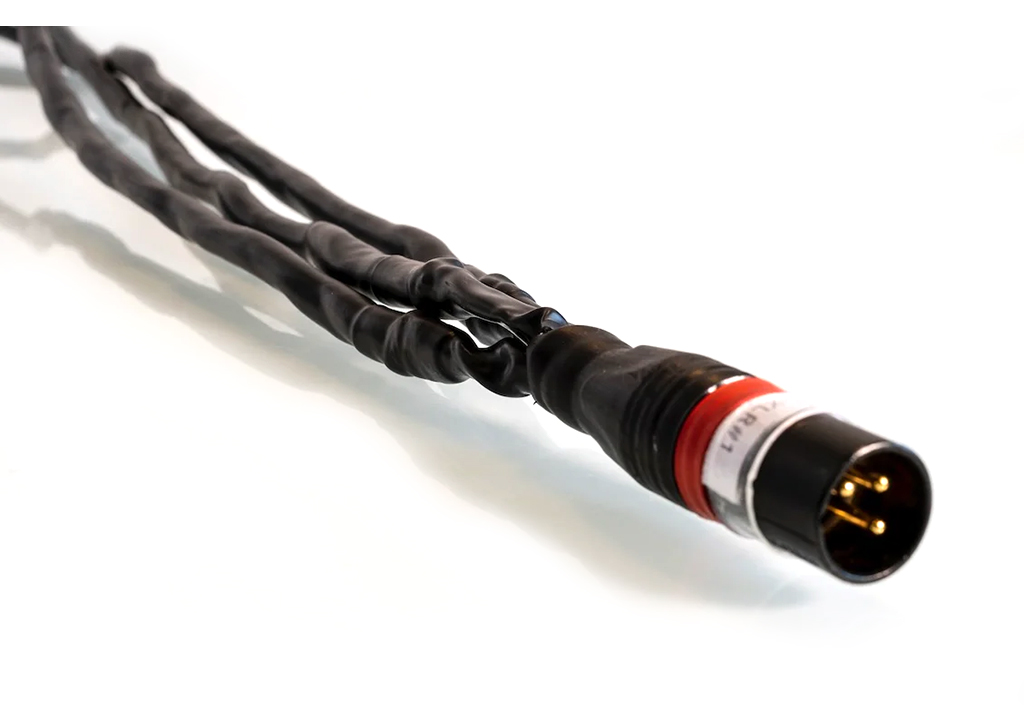Further exploration… By Chris Harr and Jeff Dorgay

One of the most over used cliches in the world of audio writing is that a cable delivers a “component level” upgrade. However, after Chris spending a ton of time with these evaluating and comparing – and me just stepping in at the last minute for a victory lap, I must say the Voodoo Labs Carbon Age Standard interconnects at $8,200 for a .8m pair are definitely at the top of what I’d pay for a set of cables, but to be very fair to Jan Geschke, the owner and designer of Voodoo Labs, worth the investment if you have a system that warrants it.
The grouchy ones in the crowd are going to freak out at this, however in perspective there are far more expensive cables than this offering far less improvement in system performance. A good comparison would be the jump in performance you hear from a mid-level Clearaudio MC cartridge to the Goldfinger.
Chris has a fantastic system, anchored by a pair of Focal Scala Utopia EVO speakers (with a REL Carbon Special sub), powered by the latest Mola Mola Perca power amplifier, and Audio Research LS-28SE linestage. Analog duties are handled by the Mola Mola Lupe phono stage, driven by the AVID Acutus table with a Kuzma 4-point tonearm and the Hana Umami Blue cartridge. Digital duties are handled by the dCS Vivaldi One.
Define better
What we look for in any component, especially a cable, is something that reveals more music in every way without merely being a tone control. Not that there’s anything wrong with that, but in this instance especially – the increased ease and ability of the system from changing two sets of interconnects was not one of those moments where we sat straining to hear a maybe difference. This was a dramatic difference – all for the better.
Just as we were skeptical of VL’s unusual Gauss Magnesium Alloy cable lifters, (as we are with all of these types of system tweaks) we came away positively surprised and our independent observations were consistent. While we are focusing primarily on the two pairs of interconnects, the Voodoo Labs wine crate (made of made from NIMP 15 certified pine wood from sustainable forestation, by the Bordeaux casemaker working for Chateau Petrus.) also included a 2m pair of their VL Witchcraft speaker cable.

It always helps tremendously when one person can switch cables while the other can listen, and here, Chris gets the credit for doing all the legwork. This time we started in the opposite direction; I had spent about an hour listening to various favorite tracks I’m familiar with and then the cables were switched back.
Major clarity
As Chris listens to more Techno/Electronica than I do, he noticed the immediate increase in energy in the lower bass region, especially after downsizing slightly from a pair of REL Carbon Specials to one. I was working late and getting a lot of late night texts on his listening impressions. And after hearing them myself, I concur with all of his conclusions.
When tracking through some choice Thomas Dolby cuts, the snappiness and weight of his synth-bass lines are heaver, faster, and more well defined tonally. Chris notices the same thing with Massive Attack’s Heligoland, finding the lower octaves much more tactile, instead of feeling like one note bass.
Yet the increase in resolution is everywhere. We both notice the way the MA vocalists’ voices are present and three-dimensional, providing a realistic recreation in between the Focals. That sounstage size is everywhere, with synthesizer effects in “Flat of the Blade” sometimes appearing straight up and nine and three o’clock, while others feeling in front and behind the listening position. My fall back position of Aimee Mann’s Lost in Space offers a similar level of dimensionality, in ways I haven’t heard to that extent.
We both concur that this is an intoxicating experience, both with audiophile pressings and music we love that is not necessarily one-step material. Tracks like “Your Mine” from Portishead, and “Mary, Mary” both from RUN-DMC and The Monkees are less sibilant and more tolerant, without being muted or rolled off. Chris winds the listening sessions up by saying, “these cables provide a pleasing tonal balance, tonal density without bloat, air without blur or brightness and resolution without sounding dry.” What could I possibly add to that?
We’ll talk about the speaker cables in another review, but suffice to say they offer tremendous improvement as well – however not quite as dramatically as the interconnects.
The secret
The secret to these cables is their use of carbon nanotubes to pass the signal. There is no metal in the signal path, save the connectors. Mr. Geschke has obtained a German patent for his technology, so this isn’t a random attempt to merely extract money from our audience.
You can read more about his process here.
Cables at this price will not make sense for everyone’s system, just as a pair of the latest carbon fiber wheels and Michelin Cup Sport 2R tires make sense for everyone’s car. But if you have a highly resolving system, or a Porsche GT3RS, these are essentials to extracting the maximum performance.
The Carbon Age cables do just that, they extract maximum performance from your components without any penalty. And they don’t wear out in a couple thousand miles like a $3,000 set of Cup Sport 2R tires! Highly recommended.
https://voodoolabs.myshopify.com/









